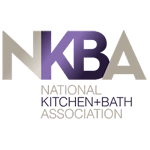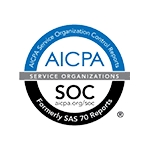Do we really need a meeting?
I’m not the biggest fan of meetings. When you schedule a meeting, think about it — you are spending the company’s money and hijacking the time of team members. A meeting that involves even just 3 to 5 people can cost the company hundreds if not thousands of dollars in people’s time and in lost productivity. That said, meetings done right can be powerful for learning, communicating and getting to decisions quickly.
Every time a meeting is scheduled, it necessitates a series of activities, some of which go beyond the actual moment of the meeting itself. What’s the difference between a meeting that wastes time and saves time? In my experience, valuable and worthwhile meetings have three components.
Preparation
There’s the preparation for the meeting which includes setting the intention, determining how much time you need to accomplish your objective (hopefully 30 minutes or less!), writing an agenda, scheduling time and all of the other details that go into planning a meeting. Sometimes that means sandwiches. Sometimes it just means finding time and writing an agenda.
Momentum
Then there’s the meeting itself. The meeting itself should have energy. A good meeting involves taking turns talking and listening, getting to a decision or next steps. Being heard and contributing through talking is important, but it’s not the only thing. Listening is essential to understanding and walking away with actionable insight and to dos.
Follow up
Finally, there’s the follow up. I can’t tell you how many meetings I’ve attended where there is no follow up. Follow up should detail the assignments that each person has taken on and provide a written record of what happened in the meeting, but most importantly it provides the specifics on what everyone in the meeting agreed upon. Following up in writing insures that the outcomes of the meeting will be respected and that decisions have been made clear.
Here are three essentials for running useful meetings.
1. Snacks — I mean the agenda
Snacks are important, of course, but not as important as an agenda. A good agenda outlines the basic intention of a meeting along with the questions that will be asked and the outcomes that you’re looking for. I recommend always leading with questions instead of answers and creating space for everyone to speak in the context of the meeting. Here are some great tips for crafting an agenda, such as specifying who will lead on each topic and articulating in advance the purpose of each discussion. If you don’t have time to write an agenda, don’t schedule a meeting.
2. The meeting minder
Depending on the meeting and what needs to be accomplished, a meeting minder can be a great way of ensuring a balance between active listening and talking while helping adhere to the allotted time for the meeting. The meeting minder has a timer and actively times the segments of the meeting for the amount of time allotted to specific conversations individuals or activities within the meeting. This isn’t right for every meeting, but it can come in handy in large groups where there are a few talkers and others who largely sit silent in a meeting format.
3. The wrap-up email
If you are not going to make time to write a wrap-up email, don’t plan a meeting. Who should write the wrap-up email? It’s a good question! Typically it would be either the person who plans the meeting or a different person has been designated as the communicator for the meeting.
Why is the wrap-up email so important? For many many reasons. The first reason that you always want to send a wrap up communication is to record what was agreed upon during the meeting. Additionally, folks who were in the meeting can use it as a reference for their action items and to dos. You can use it as a record of how a project is advancing, and what next steps are Finally, it can be shared more broadly outside of the group that originally met if necessary.
You see, a meeting is not just a meeting. How we meet and how we follow up is an indicator of how we value each other’s time and contributions.
When you ask for other people’s time, it’s important to be considerate by creating an agenda with a specific intention, to listen actively even if you need to employ a timer and to provide follow up communication that includes details on what was agreed to and who owns action items.
Remember, a meeting isn’t over when it’s over.
Beck Besecker is CEO and a co-founder of 3D Cloud.











